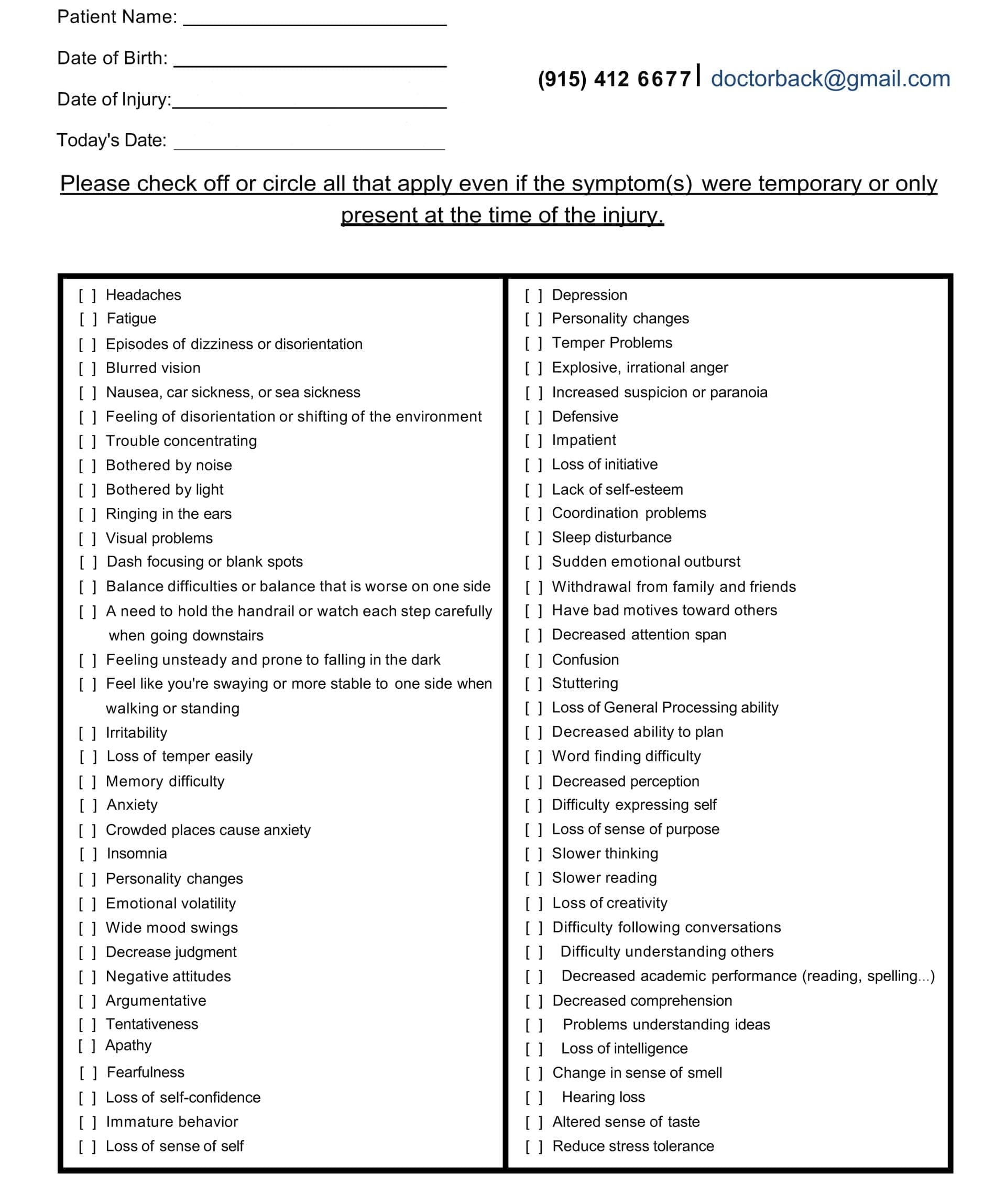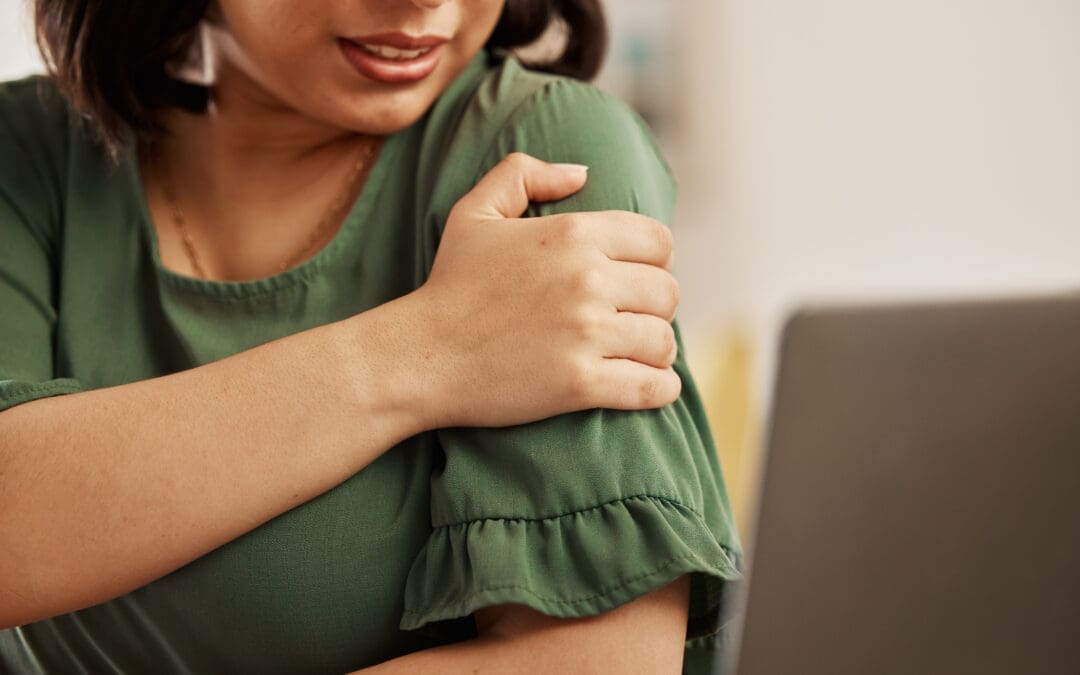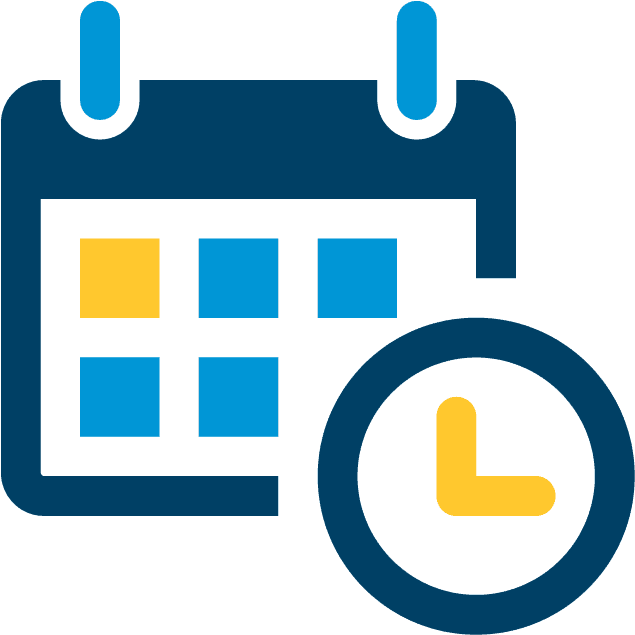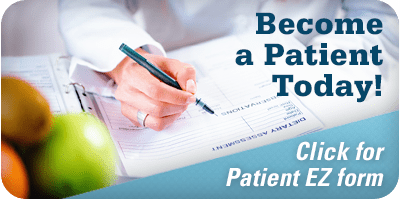
Functional Wellness: Key Understanding for CPT2 Deficiency
Explore CPT2 deficiency and learn how to improve functional wellness and lifestyle for affected individuals.
Understanding CPT2 Deficiency: A Complete Guide to Symptoms, Causes, and Holistic Treatment Options
Introduction
The human body is like a well-designed machine, with numerous systems working together to maintain our health and keep us moving. One important part of this machine is how our bodies turn food into energy. This process is particularly important when we need more energy, such as when we haven’t eaten in a while or when we’re working out. Carnitine palmitoyltransferase 2, or CPT2 for short, is an important enzyme that helps make energy. If this enzyme doesn’t function properly, it can cause a condition called CPT2 deficiency, which can affect muscles, bones, and overall health (MedlinePlus Genetics, 2008).
This article discusses CPT2, its function in the body, and the consequences of insufficient levels. We will also examine how the environment can exacerbate symptoms and discuss non-surgical treatments, including chiropractic care, acupuncture, nutrition, supplements, and targeted exercises. This article will include the clinical observations of Dr. Alexander Jimenez, DC, APRN, FNP-BC, a board-certified chiropractor and family practice nurse practitioner from El Paso, Texas, who specializes in functional medicine and holistic approaches to treating musculoskeletal and metabolic conditions (Jimenez, n.d.).
What Is CPT2 and How Does It Function in the Body?
The Basics of CPT2
CPT2 stands for carnitine palmitoyltransferase 2, an enzyme that plays a crucial role in enabling the body to utilize fat as an energy source (MedlinePlus Genetics, 2008). Enzymes are special proteins that speed up chemical reactions in the body, and CPT2 is one of the most important enzymes involved in a process called fatty acid oxidation.
Understanding Fatty Acid Oxidation
Fatty acid oxidation is the body’s way of breaking down fats to create energy. Think of it like burning wood to create heat—the body “burns” fats to create the energy it needs to function. This process is especially important during certain times (MedlinePlus Genetics, 2008):
-
During periods of fasting (when you haven’t eaten for several hours)
-
During long periods of exercise
-
When the body is stressed by illness or infection
-
During times when blood sugar levels are low
Fatty acids are a major source of energy for the heart and muscles. When we eat food, some of it gets stored as fat. Later, when the body needs extra energy, it can break down these stored fats to fuel important activities (MedlinePlus Genetics, 2008).
The Role of Mitochondria
Inside almost every cell in the body are tiny structures called mitochondria. These are often referred to as the “powerhouses” of cells because they produce most of the energy the body requires. For the body to use fats for energy, those fats must enter the mitochondria, where they can be broken down (MedlinePlus Genetics, 2008).
However, there’s a problem: long-chain fatty acids (the most common type of fat stored in the body) cannot enter mitochondria by themselves. This is where CPT2 becomes important.
The Carnitine Shuttle System
The body utilizes a specialized transport system called the carnitine shuttle to transport long-chain fatty acids into mitochondria. This system involves three main proteins (DiMauro & DiMauro, 2003):
-
Carnitine Palmitoyltransferase 1 (CPT1): Located on the outer mitochondrial membrane, this enzyme attaches fatty acids to a special molecule called carnitine. This allows the fatty acids to cross the first barrier.
-
Carnitine-Acylcarnitine Translocase (CACT): This protein acts like a shuttle, carrying the fatty acid-carnitine combination across the inner mitochondrial membrane.
-
Carnitine Palmitoyltransferase 2 (CPT2): Located on the inner mitochondrial membrane, this enzyme removes the carnitine from the fatty acids and adds a substance called coenzyme A. This final step prepares the fatty acids for breakdown into energy.
Think of this system like a relay race. CPT1 is the first runner who picks up the baton (attaches carnitine to the fatty acid). CACT is the second runner who carries the baton across the track (moves it through the membrane). CPT2 is the final runner who takes the baton to the finish line (removes carnitine and prepares the fatty acid for energy production) (DiMauro & DiMauro, 2003).
Why CPT2 Is So Important
Without CPT2 working properly, the final step in this relay race cannot happen. The fatty acids get stuck—they can make it into the mitochondria, but they cannot be converted into a form that can be used for energy. This backup can lead to several problems (MedlinePlus Genetics, 2008):
-
The body cannot use stored fats for energy efficiently
-
Long-chain fatty acids and their carnitine attachments build up in cells
-
This buildup can damage muscles, the heart, and the liver
-
The body has to rely more heavily on glucose (sugar) for energy
-
During times when glucose runs low, the body struggles to produce enough energy
What Is CPT2 Deficiency?
Defining the Condition
CPT2 deficiency is a genetic disorder that occurs when the CPT2 enzyme either doesn’t work properly or isn’t produced in sufficient amounts. This condition prevents the body from utilizing certain fats for energy, which can lead to serious health issues, particularly during periods when the body requires additional energy (MedlinePlus Genetics, 2008).
CPT2 deficiency is an autosomal recessive disorder, which means a person must inherit two copies of the faulty gene (one from each parent) to have the condition. People who inherit only one faulty gene are called carriers and usually don’t have symptoms (Baby Detect, 2022).
empowered-living-a-comprehensive-guide-for-adults-with-cpt2-deficiency_67784a2d.pdf
Types of CPT2 Deficiency
There are three main forms of CPT2 deficiency, each with different levels of severity (Baby Detect, 2022):
1. Lethal Neonatal Form
This is the most severe form and appears within the first few days after birth. Babies with this form may have (Baby Detect, 2022):
-
Severe liver failure
-
Heart problems (cardiomyopathy)
-
Seizures
-
Very low blood sugar (hypoglycemia)
-
Kidney problems
-
Brain development issues
-
Unfortunately, this form is often fatal within the first month of life
2. Severe Infantile Hepatocardiomuscular Form
This form usually appears within the first year of life and includes (Baby Detect, 2022):
-
Liver problems
-
Heart muscle disease
-
Seizures
-
Low blood sugar
-
Muscle weakness
-
Attacks triggered by fasting or illness
3. Myopathic Form (Muscle Form)
This is the most common form and is usually milder than the other two types. It typically appears anywhere from childhood to adulthood and is characterized by (Vladutiu, 1999):
-
Episodes of muscle pain (myalgia)
-
Muscle stiffness and weakness
-
Breakdown of muscle tissue (rhabdomyolysis)
-
Dark, rust-colored urine (myoglobinuria) caused by muscle proteins released into the bloodstream
-
Symptoms triggered by prolonged exercise, fasting, cold exposure, or stress
-
Normal health between episodes
The myopathic form is the most common disorder of fat metabolism affecting skeletal muscle and is the most frequent cause of inherited myoglobinuria. Men are more likely to be affected than women, though scientists aren’t entirely sure why (Baby Detect, 2022).
The Most Common Genetic Variant
About 60 percent of people with the myopathic form of CPT2 deficiency have a specific genetic change called S113L (or Ser113Leu). This variant reduces the activity of the CPT2 enzyme but doesn’t eliminate it completely, which is why this form tends to be less severe than the neonatal or infantile forms (MedlinePlus Genetics, 2008).
How CPT2 Deficiency Affects the Body and Musculoskeletal System
Energy Crisis in Muscles
Muscles are highly active tissues that require a lot of energy to function properly. Normally, muscles can switch between using glucose and fatty acids for fuel depending on what’s available. However, people with CPT2 deficiency cannot efficiently use fatty acids, which creates several problems (Rare Disease Advisor, 2021):
-
Limited Fuel Options: During prolonged exercise or fasting, when glucose stores are depleted, the muscles of individuals with CPT2 deficiency cannot tap into fat stores for energy. This leads to an energy crisis in the muscle cells.
-
Muscle Pain and Weakness: Without adequate energy, muscles cannot contract properly. This leads to muscle pain (myalgia), stiffness, and weakness during or after physical activity.
-
Rhabdomyolysis: When the energy shortage becomes severe, muscle cells begin to break down. This process, called rhabdomyolysis, releases muscle proteins (especially myoglobin) into the bloodstream. Myoglobin can damage the kidneys and cause the urine to turn dark brown or rust-colored (Adult-Onset CPT II Deficiency, 2023).
Effects on Different Body Systems
The Musculoskeletal System
The musculoskeletal system, which includes all the bones, muscles, tendons, and ligaments, is significantly affected by CPT2 deficiency. According to Dr. Alexander Jimenez’s clinical observations, patients with metabolic conditions affecting muscle function often experience (Jimenez, n.d.):
-
Muscle Fatigue: Muscles tire more easily during physical activity
-
Exercise Intolerance: Difficulty performing activities that require sustained muscle use
-
Muscle Stiffness: Particularly after periods of rest following exercise
-
Joint Pain: While CPT2 deficiency primarily affects muscles, the resulting muscle weakness can alter how a person moves, leading to compensatory patterns that stress joints
-
Postural Changes: Chronic muscle weakness may lead to poor posture, which can cause additional strain on the spine and other structures
The Cardiovascular System
Although the myopathic form of CPT2 deficiency primarily affects skeletal muscles (the muscles we control voluntarily), the heart muscle can also be affected in severe cases. The heart requires constant energy to pump blood throughout the body, and when fat metabolism is impaired, cardiac function may be compromised (Baby Detect, 2022).
The Liver and Metabolism
The liver plays a central role in regulating energy metabolism. In CPT2 deficiency, the inability to properly break down fatty acids can lead to fat accumulation in the liver and impaired production of ketones—molecules that can serve as an alternative energy source when glucose is low. This contributes to hypoketotic hypoglycemia (low blood sugar with low ketone levels), which can cause weakness, confusion, and other symptoms (MedlinePlus Genetics, 2008).
The Kidneys
During episodes of rhabdomyolysis, large amounts of myoglobin are released into the bloodstream. The kidneys must filter this protein, but too much myoglobin can clog the tiny filtering units in the kidneys, potentially leading to acute kidney injury or even kidney failure if not treated promptly (Adult-Onset CPT II Deficiency, 2023).
Biochemical Consequences
At the cellular level, CPT2 deficiency causes several biochemical problems (MedlinePlus Genetics, 2008):
-
Accumulation of Long-Chain Acylcarnitines: These are fatty acids still attached to carnitine. They build up because CPT2 cannot remove the carnitine. High levels of these substances can be toxic to cells.
-
Low Ketone Production: Normally, when fats are broken down, they produce ketones that can be used as fuel by the brain and other organs. When fat breakdown is blocked, ketone levels remain low (hypoketosis).
-
Hypoglycemia: With reduced ability to use fats and produce ketones, the body becomes more dependent on glucose. During fasting or prolonged exercise, blood sugar levels can drop dangerously low.
-
Oxidative Stress: The accumulation of unprocessed fatty acids and reduced energy production can lead to oxidative stress, which damages cells and tissues.
Environmental Factors That Can Cause and Show Signs of CPT2 Deficiency
One of the most important things to understand about the myopathic form of CPT2 deficiency is that symptoms usually don’t appear all the time. Instead, they are triggered by certain environmental and physiological factors that increase the body’s need for energy from fat metabolism. Understanding these triggers is crucial for preventing attacks and effectively managing the condition.
Prolonged Exercise
Exercise is one of the most common triggers of symptoms in people with CPT2 deficiency. However, not all types of exercise are equally likely to cause problems (MedLink Neurology, 2025):
Why Exercise Triggers Symptoms:
-
During exercise, muscles use large amounts of energy
-
After the first 15-30 minutes of sustained exercise, the body shifts from using primarily glucose to using more fatty acids for fuel
-
People with CPT2 deficiency cannot make this shift efficiently
-
As glucose stores deplete, an energy crisis develops in the muscles
-
This can lead to muscle pain, stiffness, weakness, and rhabdomyolysis
Types of Exercise Most Likely to Trigger Symptoms:
-
Endurance activities (running, cycling, swimming long distances)
-
Activities lasting more than 30-60 minutes
-
Exercise performed without adequate pre-fueling with carbohydrates
-
Activities that engage large muscle groups
Exercise Characteristics:
According to research, the duration of exercise required to trigger an attack varies among individuals. In one study, exercise lasting 15-60 minutes was sufficient for attacks in 9 out of 13 patients, while 3 patients required 1-4 hours, and 1 patient needed more than 4 hours (Phenotype of CPT II Deficiency, 2018).
Dr. Jimenez emphasizes the importance of understanding each patient’s exercise tolerance and developing individualized activity plans that build strength and endurance without triggering metabolic crises (Jimenez, n.d.).
Fasting and Prolonged Periods Without Food
Fasting or going too long without eating is another major trigger for CPT2 deficiency symptoms (MedLink Neurology, 2025).
Why Fasting Is Problematic:
-
After several hours without food, blood glucose levels begin to drop
-
The body normally responds by breaking down stored fats to provide energy
-
People with CPT2 deficiency cannot efficiently use these fats
-
As glucose stores deplete without fat oxidation to compensate, energy levels plummet
-
This can lead to hypoglycemia, muscle weakness, and other symptoms
Fasting Scenarios That May Trigger Symptoms:
-
Skipping meals, especially breakfast
-
Sleeping late and delaying breakfast
-
Prolonged illness that reduces appetite
-
Medical procedures requiring fasting
-
Intentional fasting or very low-calorie diets
Dr. Jimenez’s Clinical Insight:
Dr. Jimenez notes that in his functional medicine practice, understanding a patient’s eating patterns and timing is crucial for managing metabolic conditions. He often recommends frequent, small meals rich in complex carbohydrates to maintain stable blood sugar levels and prevent metabolic stress (Jimenez, 2022).
Cold Exposure
Exposure to cold temperatures is another environmental trigger for symptoms of CPT2 deficiency (MedLink Neurology, 2025; Nutrition and Exercise in CPT Deficiency, 2021).
Why Cold Triggers Symptoms:
-
When exposed to cold, the body must generate heat to maintain its core temperature
-
Heat production requires significant energy
-
The body increases fat metabolism to fuel this thermogenic response
-
People with CPT2 deficiency cannot efficiently increase fat oxidation
-
This creates an energy deficit that can trigger muscle breakdown
Cold Exposure Scenarios:
-
Winter sports and activities
-
Swimming in cold water
-
Working in cold environments
-
Inadequate clothing in cold weather
-
Sudden temperature changes
Infections and Illness
Infections and illnesses are particularly dangerous triggers for people with CPT2 deficiency because they can rapidly lead to severe complications (Battling Recurrent Rhabdomyolysis, 2024).
Why Infections Trigger Symptoms:
-
Infections increase the body’s metabolic demands
-
Fever further increases energy requirements
-
Illness often reduces appetite, leading to inadequate carbohydrate intake
-
The combination of increased energy needs and decreased food intake creates a metabolic crisis
-
Infections trigger inflammatory responses that can worsen muscle damage
Types of Infections That May Trigger Symptoms:
-
Respiratory infections (colds, flu, pneumonia)
-
Gastrointestinal infections
-
Urinary tract infections
-
Any infection causing fever
Clinical Importance:
Research has shown that prompt identification and treatment of infections are crucial for minimizing muscle breakdown in individuals with CPT2 deficiency. Early intervention with appropriate antibiotics and supportive care can prevent severe complications (Battling Recurrent Rhabdomyolysis, 2024).
Emotional and Physical Stress
Both psychological and physical stress can trigger symptoms in susceptible individuals (MedLink Neurology, 2025; Nutrition and Exercise in CPT Deficiency, 2021).
How Stress Affects the Body:
-
Stress triggers the release of hormones like cortisol and adrenaline
-
These hormones mobilize energy stores, including fats
-
Prolonged stress increases overall metabolic demands
-
In people with CPT2 deficiency, this increased demand cannot be met through fat metabolism
-
Chronic stress can lead to gradual muscle weakness and increased susceptibility to acute attacks
Types of Stress That May Trigger Symptoms:
-
Psychological stress (work pressure, relationship problems, anxiety)
-
Physical stress (surgery, trauma, extreme physical demands)
-
Sleep deprivation
-
Dehydration
Dr. Jimenez incorporates stress management into his holistic treatment protocols, recognizing that the mind-body connection plays a significant role in managing metabolic and musculoskeletal conditions (Jimenez, n.d.).
Certain Medications
Some medications can trigger or worsen symptoms in people with CPT2 deficiency by interfering with energy metabolism or increasing muscle breakdown (MedLink Neurology, 2025).
Medications That May Trigger Symptoms:
-
Valproate (an anti-seizure medication)
-
High doses of diazepam (a sedative)
-
Ibuprofen and other NSAIDs
-
Certain anesthesia drugs
-
Statins (cholesterol-lowering drugs)
Why These Medications Are Problematic:
-
Some interfere with mitochondrial function
-
Others increase the breakdown of muscle tissue
-
Some may affect enzyme activity or energy metabolism pathways
Menstruation
Women with CPT2 deficiency may experience worsening of symptoms during menstruation (Carnitine Palmityl Transferase Deficiency, 2024).
Why Menstruation May Trigger Symptoms:
-
Hormonal changes affect metabolism
-
Increased energy demands during this time
-
Possible effects of hormones on enzyme regulation
-
Some women report increased muscle pain and weakness during their menstrual periods
Dehydration and Low Fluid Intake
Inadequate hydration can contribute to muscle problems in people with CPT2 deficiency (Nutrition and Exercise in CPT Deficiency, 2021).
How Dehydration Affects the Body:
-
Reduces blood flow to muscles
-
Decreases the body’s ability to remove metabolic waste products
-
Can impair kidney function, especially during rhabdomyolysis episodes
-
May worsen muscle cramping and pain
Combined Triggers
It’s important to note that many severe episodes of rhabdomyolysis occur when multiple triggers are present at the same time. For example (MedLink Neurology, 2025):
-
Exercising in cold weather without adequate food intake
-
Prolonged skiing while fasting
-
Working out while fighting off an infection
-
Strenuous activity combined with stress and inadequate sleep
Understanding and avoiding these environmental triggers is a cornerstone of managing CPT2 deficiency. Dr. Jimenez emphasizes patient education about trigger identification and avoidance as part of his comprehensive treatment approach (Jimenez, n.d.).
Thermal Instability of the S113L Variant
Recent research has provided important insights into why environmental factors, such as fever and prolonged exercise, trigger attacks in individuals with the most common genetic variant (S113L) of CPT2 deficiency.
Studies have shown that the S113L variant of the CPT2 enzyme is thermally unstable—meaning it loses its function more rapidly at higher temperatures compared to the normal enzyme. At body temperature (37°C/98.6°F), the mutated enzyme works reasonably well. However, at 40-45°C (104-113°F), which can occur during fever or intense exercise, the enzyme breaks down much more quickly (Stabilization of S113L Variant, 2016).
This thermal instability helps explain why fever and prolonged exercise are such potent triggers of symptoms. The combination of increased energy demands and decreased enzyme function creates the perfect storm for a metabolic crisis.
Unlocking Vitality: Chiropractic Wisdom and the Science of Functional Healing-Video
How Nonsurgical Treatments Like Chiropractic Care and Acupuncture Can Help Reduce CPT2 Deficiency Symptoms
While there is currently no cure for CPT2 deficiency, various nonsurgical treatments can help manage symptoms, improve quality of life, and reduce the frequency and severity of attacks. Dr. Alexander Jimenez’s clinical approach demonstrates how integrating chiropractic care, acupuncture, and other complementary therapies with conventional medical management can provide comprehensive support for people with metabolic myopathies like CPT2 deficiency.
Understanding the Role of Complementary Therapies
Before exploring specific treatments, it’s important to understand that CPT2 deficiency is a metabolic disorder that requires medical management. However, the symptoms of CPT2 deficiency—particularly muscle pain, weakness, stiffness, and decreased mobility—can be significantly improved with therapies that address musculoskeletal function, pain management, and overall wellness (Jimenez, n.d.).
Dr. Jimenez’s practice philosophy emphasizes treating the whole person, not just the underlying metabolic defect. His approach recognizes that people with CPT2 deficiency experience (Jimenez, n.d.):
-
Chronic muscle pain and stiffness
-
Reduced physical function and mobility
-
Poor posture due to muscle weakness
-
Joint problems from altered movement patterns
-
Anxiety and stress related to managing a chronic condition
-
Nutritional challenges
-
Difficulty maintaining physical fitness
Chiropractic Care for CPT2 Deficiency
Chiropractic care focuses on the diagnosis and treatment of musculoskeletal disorders, particularly those affecting the spine and nervous system. For people with CPT2 deficiency, chiropractic care can address several important issues.
How Chiropractic Care Helps
1. Spinal Alignment and Nervous System Function
The nervous system controls every function in the body, including muscle contraction, energy metabolism, and pain perception. When the spine is misaligned, it can interfere with nerve signals and contribute to muscle dysfunction, pain, and reduced mobility (Chiropractic BioPhysics, 2024).
Dr. Jimenez explains that proper spinal alignment is foundational to optimal body function. Through gentle chiropractic adjustments, misalignments (subluxations) can be corrected, which (Jimenez, n.d.):
-
Reduces pressure on nerves
-
Improves communication between the brain and muscles
-
Enhances overall body function
-
Reduces pain
-
Improves mobility
For people with CPT2 deficiency, optimizing nervous system function is particularly important because their muscles are already compromised by metabolic dysfunction. Any additional stress on the neuromuscular system can worsen symptoms.
2. Muscle Pain and Tension Relief
People with CPT2 deficiency often experience chronic muscle pain, tension, and spasms, particularly after exercise or during metabolic stress. Chiropractic adjustments can help by (Understanding Soft Tissue Injuries, 2024):
-
Reducing muscle tension
-
Improving blood flow to muscles
-
Decreasing inflammation
-
Releasing trapped nerves that may contribute to pain
Studies have shown that chiropractic care can significantly reduce pain in people with musculoskeletal conditions. One study found that pain scores dropped from 55.3 to 24.5 following chiropractic treatment (Understanding Soft Tissue Injuries, 2024).
3. Improved Mobility and Function
Muscle weakness and pain in CPT2 deficiency can lead to reduced mobility and compensatory movement patterns that stress joints and other structures. Chiropractic care helps by (Chiropractors Treat Musculoskeletal Pain, 2025):
-
Restoring proper joint mobility
-
Correcting postural imbalances
-
Improving overall movement patterns
-
Enhancing functional capacity
Dr. Jimenez emphasizes that improved mobility allows patients to maintain appropriate levels of physical activity, which is important for overall health, muscle function, and metabolic control (Jimenez, n.d.).
4. Reducing Medication Dependence
Many people with chronic musculoskeletal pain rely on pain medications, which can have side effects and may interfere with metabolic function. Research shows that chiropractic care can help reduce the use of pain medications, including opioids and over-the-counter analgesics (Chiropractic Care and Medication Use, 2025).
For people with CPT2 deficiency, this is particularly important because some pain medications (like ibuprofen) can actually worsen symptoms or trigger rhabdomyolysis episodes (MedLink Neurology, 2025).
Dr. Jimenez’s Chiropractic Approach
Based on his clinical observations and integrative medicine training, Dr. Jimenez uses several chiropractic techniques in his practice (Jimenez, n.d.):
-
Specific Spinal Adjustments: Gentle, precise adjustments to correct misalignments and restore proper spinal function
-
Postural Assessment and Correction: Detailed analysis of posture and customized protocols to address imbalances
-
Functional Movement Assessment: Evaluation of how patients move and identification of dysfunctional patterns that may contribute to symptoms
-
Patient Education: Teaching patients about proper body mechanics, posture, and movement to prevent injury and optimize function
Soft Tissue Therapies
In addition to spinal adjustments, soft tissue therapies are a crucial component of chiropractic care for individuals with CPT2 deficiency.
Types of Soft Tissue Therapy
1. Myofascial Release
This technique involves applying sustained pressure to tight or restricted areas in muscles and fascia (the connective tissue surrounding muscles). Benefits include (Soft Tissue Manipulation in Chiropractic, 2022):
-
Reduced muscle tension
-
Improved circulation
-
Release of trigger points (tight knots in muscles)
-
Enhanced flexibility and range of motion
2. Trigger Point Therapy
Trigger points are hyper-irritable spots in muscles that can cause local and referred pain. Trigger point therapy targets these areas (10 Chiropractic Techniques, 2025):
-
Release muscle tension
-
Reduce pain
-
Improve muscle function
-
Prevent the formation of new trigger points
For people with CPT2 deficiency who experience frequent muscle pain and spasms, trigger point therapy can provide significant relief.
3. Muscle Energy Techniques
These techniques involve the patient actively using their muscles in specific directions against resistance provided by the practitioner. This helps to (Soft Tissue Therapy and Muscle Release, 2024):
-
Lengthen shortened muscles
-
Strengthen weak muscles
-
Improve joint mobility
-
Restore proper muscle balance
4. Instrument-Assisted Soft Tissue Mobilization
This technique uses specialized instruments to detect and treat areas of soft tissue restriction. Benefits include (Soft Tissue Therapy and Muscle Release, 2024):
-
Breaking up scar tissue
-
Reducing fascial restrictions
-
Improving blood flow
-
Enhancing tissue healing
Clinical Application for CPT2 Deficiency
Dr. Jimenez notes that soft tissue therapies must be carefully applied in people with metabolic myopathies. Because their muscles are more vulnerable to damage, techniques must be gentle and progressive. His approach includes (Jimenez, n.d.):
-
Starting with very gentle techniques and gradually increasing intensity as tolerated
-
Avoiding aggressive deep tissue work that could trigger rhabdomyolysis
-
Combining soft tissue therapy with appropriate nutrition to support muscle recovery
-
Monitoring for signs of excessive muscle breakdown
Acupuncture for CPT2 Deficiency
Acupuncture is an ancient healing practice that involves inserting very thin needles into specific points on the body to promote healing and reduce pain. Modern research has validated many of acupuncture’s benefits for musculoskeletal conditions and pain management.
How Acupuncture Helps
1. Pain Relief
Acupuncture is well-established as an effective treatment for various types of pain. Research shows it can (Acupuncture Promotes ATP Metabolism, 2025):
-
Activate the body’s natural pain-relieving systems
-
Release endorphins (natural pain-killing chemicals)
-
Reduce inflammation
-
Decrease pain signals sent to the brain
For people with CPT2 deficiency who experience chronic muscle pain, acupuncture can provide relief without the side effects of medications.
2. Improved Muscle Function
Studies have shown that acupuncture can improve muscle function through several mechanisms (Acupuncture Plus Low-Frequency Stimulation, 2016):
-
Increasing blood flow to muscles
-
Enhancing oxygen delivery to muscle tissue
-
Stimulating muscle regeneration
-
Preventing muscle atrophy (wasting)
Research has demonstrated that acupuncture combined with low-frequency electrical stimulation can counteract muscle atrophy and enhance muscle regeneration, making it potentially beneficial for individuals with muscle weakness resulting from metabolic conditions (Acupuncture Plus Low-Frequency Stimulation, 2016).
3. Enhanced Metabolism and Energy Production
Recent research has revealed that acupuncture can influence cellular metabolism and energy production. Studies show that acupuncture (Acupuncture Promotes ATP Metabolism, 2025):
-
Activates specific signaling pathways involved in energy metabolism
-
Promotes mitochondrial function
-
Increases ATP (energy) production in muscle cells
-
Enhances the body’s ability to use available fuel sources
This is particularly relevant for people with CPT2 deficiency, whose primary problem is impaired energy metabolism in muscles.
4. Stress Reduction and Nervous System Balance
Acupuncture has well-documented effects on the nervous system and stress response. It can (Evaluation of Acupuncture for Sepsis Myopathy, 2020):
-
Reduce cortisol and other stress hormones
-
Balance the autonomic nervous system
-
Improve sleep quality
-
Reduce anxiety
-
Enhance overall sense of well-being
Since stress is a known trigger for CPT2 deficiency symptoms, acupuncture’s stress-reducing effects may help prevent attacks.
5. Support for Muscle Recovery
Research has shown that acupuncture can (Effect of Acupuncture on Carnitine, 2012):
-
Reduce exercise-induced muscle soreness
-
Speed recovery after muscle injury
-
Reduce inflammation in muscle tissue
-
Support the body’s natural healing processes
Dr. Jimenez’s Integrated Approach with Acupuncture
Dr. Jimenez incorporates both traditional acupuncture and electro-acupuncture (which adds mild electrical stimulation) into his treatment protocols. His clinical observations suggest that acupuncture can be particularly helpful for patients with CPT2 deficiency (Jimenez, n.d.):
-
Providing safe, non-pharmaceutical pain relief
-
Supporting muscle function without triggering metabolic stress
-
Enhancing overall energy levels
-
Reducing the frequency of symptom flare-ups
-
Improving quality of life
Safety Considerations for Complementary Therapies
While chiropractic care and acupuncture can be beneficial for people with CPT2 deficiency, safety must always be the priority. Dr. Jimenez emphasizes several important considerations (Jimenez, n.d.):
-
Gentle Approach: All manual therapies should start gently and progress slowly. Aggressive treatment could potentially trigger rhabdomyolysis.
-
Communication: Patients should inform their practitioners about their CPT2 deficiency and any symptoms they experience during or after treatment.
-
Monitoring: Watch for signs of excessive muscle breakdown, such as severe muscle pain, weakness, or dark urine following treatment.
-
Integrated Care: These complementary therapies should be used in conjunction with, not as an alternative to, conventional medical management.
-
Individualization: Treatment plans should be tailored to each person’s specific symptoms, the severity of their deficiency, and overall health status.
-
Timing: Avoid intensive manual therapies during acute attacks or periods of metabolic stress.
A Holistic Treatment Plan Incorporating Multiple Modalities
Dr. Jimenez’s clinical approach to CPT2 deficiency demonstrates the power of integrating multiple treatment modalities into a comprehensive, holistic plan. His functional medicine perspective recognizes that optimal management requires addressing multiple aspects of health simultaneously.
The Foundation: Conventional Medical Management
Any holistic treatment plan for CPT2 deficiency must be built on a foundation of appropriate conventional medical management, including (Myopathic CPT II Deficiency, 2023):
-
Proper diagnosis through genetic testing and metabolic studies
-
Regular monitoring by healthcare providers
-
Dietary modifications (discussed in detail below)
-
Emergency protocols for acute attacks
-
Avoidance of known triggers
Component 1: Spinal Adjustments and Postural Correction
As previously discussed, maintaining optimal spinal alignment is essential for the proper functioning of the nervous system and overall musculoskeletal health.
Dr. Jimenez’s Approach Includes:
-
Regular chiropractic adjustments to maintain spinal alignment
-
Postural assessments and corrections
-
Home exercises to support proper posture
-
Ergonomic recommendations for work and daily activities
-
Education about body mechanics
Frequency and Progression:
The frequency of adjustments is tailored to each patient’s individual needs. Some people may initially benefit from weekly adjustments, then transition to monthly maintenance care. Others may need more or less frequent visits depending on their symptoms and response to treatment (Jimenez, n.d.).
Component 2: Soft-Tissue Therapies
Soft tissue work addresses the muscles, fascia, and other connective tissues that are directly affected by CPT2 deficiency.
Integrated Soft-Tissue Protocol:
-
Gentle myofascial release techniques
-
Trigger point therapy as needed
-
Muscle energy techniques to restore balance
-
Gradual progression in intensity as tolerated
-
Use of heat or cold therapy to support healing
Dr. Jimenez’s Clinical Insight:
In his practice, Dr. Jimenez has observed that patients with metabolic myopathies respond best to gentle, consistent soft tissue work rather than aggressive, infrequent treatments. He emphasizes the importance of “working with the body, not against it” (Jimenez, n.d.).
Component 3: Acupuncture and Electro-Acupuncture
Acupuncture is integrated into the treatment plan to address pain, support muscle function, reduce stress, and enhance overall energy metabolism.
Typical Acupuncture Protocol:
-
Initial assessment to identify specific patterns of imbalance
-
Selection of acupuncture points based on symptoms and traditional Chinese medicine principles
-
Treatment sessions typically last 20-30 minutes
-
Frequency usually ranges from once weekly to once monthly, depending on individual needs
-
May include electro-acupuncture for enhanced effects on muscle function
Point Selection for CPT2 Deficiency:
While specific point selection varies by individual, commonly used points for muscle weakness, pain, and metabolic support include points along the Spleen, Kidney, Liver, and Bladder meridians, which are associated with muscle function, energy metabolism, and overall vitality in traditional Chinese medicine (Jimenez, n.d.).
Component 4: Nutrition and Dietary Management
Nutrition is arguably the most important component of managing CPT2 deficiency. The right dietary approach can significantly reduce the frequency and severity of attacks while supporting overall health.
Fundamental Nutritional Principles
1. High Carbohydrate Intake
People with CPT2 deficiency should consume a diet rich in carbohydrates to provide readily available glucose for energy (CPT2 Fact Sheet, n.d.).
Recommendations:
-
Carbohydrates should make up 65-70% of total daily calories
-
Focus on complex carbohydrates that provide sustained energy
-
Include carbohydrates in every meal and snack
Good Carbohydrate Sources:
-
Whole grains (brown rice, quinoa, oats, whole wheat)
-
Starchy vegetables (potatoes, sweet potatoes, corn, peas)
-
Legumes (beans, lentils, chickpeas)
-
Fruits
-
Low-fat dairy products
2. Low to Moderate Fat Intake
Since people with CPT2 deficiency cannot efficiently use long-chain fatty acids, dietary fat should be limited, typically to no more than 20-30% of total calories (Carnitine Palmitoyltransferase Deficiencies, 1999).
Important Considerations:
-
Avoid very low-fat diets, as some fat is essential for health
-
Include essential fatty acids (omega-3 and omega-6)
-
Focus on easily metabolized fats
3. Medium-Chain Triglyceride (MCT) Oil
MCT oil is a special type of fat that can be more easily metabolized by people with CPT2 deficiency. Medium-chain fatty acids (typically 6-12 carbons long) can enter mitochondria without requiring the CPT system (North Dakota CPT-2 Fact Sheet, 2008).
MCT Oil Benefits:
-
Provides an alternative fat source that doesn’t require CPT2
-
Can help meet essential fat needs
-
May provide sustained energy
-
Generally well-tolerated in moderate amounts
How to Use MCT Oil:
-
Start with small amounts (1 teaspoon) and increase gradually
-
Can be added to foods like oatmeal, smoothies, or used in cooking
-
Should be introduced under medical supervision
-
Too much can cause digestive upset
Important Note: Some research suggests that while MCTs can be beneficial, care should be taken as the body’s capacity to metabolize medium-chain fatty acids through CPT-independent pathways may still be limited (Characterisation of CPT, 1997).
4. Frequent, Regular Meals
To prevent hypoglycemia and maintain stable energy levels, individuals with CPT2 deficiency should eat regularly and on a consistent schedule (CPT2 Deficiency Treatment, 2023).
Meal Timing Recommendations:
-
Eat every 3-4 hours during the day
-
Never skip breakfast
-
Include a bedtime snack to prevent overnight fasting
-
May need to wake during the night for a snack in severe cases
-
Plan ahead for situations that might delay meals
5. Adequate Protein
Protein is important for maintaining muscle mass and supporting overall health. People with CPT2 deficiency should consume adequate protein from lean sources (North Dakota CPT-2 Fact Sheet, 2008).
Protein Recommendations:
-
Include lean protein sources at each meal
-
Good choices include chicken, turkey, fish, lean beef, eggs, low-fat dairy, and legumes
-
Protein should make up about 15-20% of total calories
Dr. Jimenez’s Nutritional Philosophy
Dr. Jimenez’s approach to nutrition in metabolic conditions emphasizes personalization and the principles of functional medicine. He notes that while general dietary guidelines are important, each person’s nutritional needs may vary based on (Jimenez, 2022):
-
Severity of their enzyme deficiency
-
Activity level
-
Other health conditions
-
Food preferences and cultural considerations
-
Metabolic testing results
His nutritional counseling includes:
-
Detailed dietary assessment
-
Personalized meal planning
-
Education about reading food labels
-
Strategies for dining out and social situations
-
Regular monitoring and adjustments
Component 5: Vitamins and Supplements
Specific vitamins and supplements can support metabolic function, muscle health, and overall well-being in people with CPT2 deficiency.
Evidence-Based Supplements for Metabolic and Musculoskeletal Support
1. L-Carnitine
L-carnitine is the compound that CPT enzymes use to shuttle fatty acids into mitochondria. Supplementation with L-carnitine is sometimes recommended for people with CPT2 deficiency, though its benefits remain somewhat controversial (Carnitine Palmitoyltransferase Deficiencies, 1999).
Potential Benefits:
-
May help maintain normal carnitine levels
-
Could support the remaining functional enzyme activity
-
May help with overall energy metabolism
Considerations:
-
Should only be used under medical supervision
-
Dosing varies but typically ranges from 1-3 grams per day
-
Not all studies show clear benefits
-
May not be helpful for all forms of CPT2 deficiency
2. Coenzyme Q10 (CoQ10)
CoQ10 is a compound that plays a crucial role in the production of energy within mitochondria. It acts as an antioxidant and supports the electron transport chain (the final step in energy production) (Dietary Supplements for Mitochondrial Disorders, 2025).
Potential Benefits:
-
Supports mitochondrial function
-
Provides antioxidant protection
-
May improve energy production
-
It could help reduce muscle fatigue
Typical Dosing:
-
100-300 mg daily
-
Should be taken with fat-containing meals for better absorption
-
Ubiquinol form may be better absorbed than ubiquinone
3. B-Complex Vitamins
B vitamins play essential roles in energy metabolism and are particularly important for people with metabolic disorders (Folate, Vitamin B6, and Vitamin B12, 2023).
Key B Vitamins for Metabolic Support:
-
Vitamin B1 (Thiamine): Helps metabolize carbohydrates
-
Vitamin B2 (Riboflavin): Involved in energy production and fatty acid metabolism
-
Vitamin B3 (Niacin): Supports energy metabolism
-
Vitamin B6 (Pyridoxine): Important for amino acid and carbohydrate metabolism
-
Vitamin B12 (Cobalamin): Essential for energy production and nervous system function
-
Folate: Works with B12 in various metabolic processes
Benefits for CPT2 Deficiency:
-
Support optimal metabolism of carbohydrates (the primary fuel source)
-
Help the body efficiently use available energy sources
-
Support nervous system health
-
May reduce homocysteine levels
-
Support muscle function
4. Vitamin D
Vitamin D is essential for maintaining muscle function, promoting bone health, and supporting the immune system (Natural Products for Metabolic Syndrome, 2024).
Benefits:
-
Supports muscle strength and function
-
Important for bone health (especially important if activity is limited)
-
Modulates inflammation
-
Supports immune function
Typical Dosing:
-
Based on blood level testing
-
Often 1,000-4,000 IU daily for maintenance
-
Higher doses may be needed if deficient
5. Magnesium
Magnesium is involved in more than 300 enzymatic reactions in the body, including many related to energy metabolism and muscle function (The 5 Best Vitamins to Boost Metabolism, 2024).
Benefits:
-
Supports muscle relaxation and reduces cramping
-
Important for energy production
-
Supports nervous system function
-
May help reduce muscle pain
Typical Dosing:
-
200-400 mg daily
-
Different forms have different absorption rates (magnesium glycinate is often well-tolerated)
6. Alpha-Lipoic Acid
This antioxidant supports mitochondrial function and glucose metabolism (Dietary Supplements for Mitochondrial Disorders, 2025).
Benefits:
-
Supports mitochondrial function
-
Provides antioxidant protection
-
May improve glucose metabolism
-
Supports nerve health
Typical Dosing:
-
200-600 mg daily
7. Vitamin E
As a fat-soluble antioxidant, vitamin E can help protect cell membranes from oxidative damage (Natural Products for Metabolic Syndrome, 2024).
Benefits:
-
Antioxidant protection
-
Supports muscle health
-
May reduce oxidative stress
8. Omega-3 Fatty Acids (DHA and EPA)
While overall fat intake should be limited in CPT2 deficiency, essential fatty acids, such as omega-3s, are important for health (Natural Products for Metabolic Syndrome, 2024).
Benefits:
-
Reduce inflammation
-
Support cardiovascular health
-
Support brain function
-
May help with muscle recovery
Important Note: Omega-3 supplements should be used cautiously and in consultation with a healthcare provider, as they are long-chain fatty acids. However, in small amounts, their anti-inflammatory and other health benefits may outweigh concerns.
9. Vitamin C
This water-soluble antioxidant supports immune function, collagen synthesis, and may help with muscle recovery (Natural Products for Metabolic Syndrome, 2024).
Benefits:
-
Antioxidant protection
-
Supports immune function
-
Important for connective tissue health
-
May help with muscle recovery
Dr. Jimenez’s Supplement Protocol
Based on his clinical experience and functional medicine training, Dr. Jimenez typically recommends (Recommended Chiropractic Supplements, 2022; Jimenez, n.d.):
Foundation Supplements:
-
High-quality multivitamin-multimineral complex to cover basic nutritional needs
-
B-complex vitamins to support energy metabolism
-
Vitamin D (dose based on blood levels)
-
Magnesium for muscle and metabolic support
Targeted Supplements (based on individual needs):
-
CoQ10 for mitochondrial support
-
L-carnitine (if recommended by physician)
-
Alpha-lipoic acid for antioxidant and metabolic support
-
Omega-3 fatty acids in appropriate amounts
-
Vitamin E for antioxidant protection
Important Considerations:
-
All supplements should be pharmaceutical-grade and third-party tested for quality
-
Dosing should be individualized based on blood testing and individual needs
-
Regular monitoring is important to assess effectiveness and adjust as needed
-
Supplements should never replace a healthy diet
-
Always inform all healthcare providers about supplements being taken
Component 6: Targeted Exercise and Physical Therapy
While exercise can trigger symptoms in CPT2 deficiency, engaging in appropriate physical activity is essential for maintaining muscle strength, cardiovascular health, and overall well-being. The key is finding the right type, intensity, and duration of exercise.
Principles of Exercise for CPT2 Deficiency
1. Focus on Short-Duration, High-Intensity Activities
Research has shown that exercise relying primarily on anaerobic metabolism (which doesn’t require fat oxidation) is safer for people with CPT2 deficiency (Nutrition and Exercise in CPT Deficiency, 2021).
Why This Works:
-
During the first few minutes of intense exercise, muscles use stored ATP and phosphocreatine
-
Glycolysis (breaking down glucose) provides energy for roughly 5-30 seconds to 2-3 minutes of intense activity
-
These energy systems don’t require fat oxidation
-
After about 30 minutes of continuous moderate exercise, the body shifts toward greater fat utilization, which is problematic for people with CPT2 deficiency
Safe Exercise Types:
-
Resistance training (weight lifting with appropriate rest between sets)
-
High-intensity interval training (HIIT) with short work periods (30 seconds to 2 minutes) and adequate rest
-
Sprint intervals
-
Power-based activities
-
Activities that can be performed in short bursts with rest
2. Avoid Prolonged Endurance Exercise
Activities that require sustained effort for more than 30 minutes are more likely to trigger symptoms because they increasingly rely on fat metabolism (Nutrition and Exercise in CPT Deficiency, 2021).
Activities to Approach with Caution:
-
Long-distance running
-
Cycling for extended periods
-
Swimming long distances
-
Extended aerobic exercise classes
3. Ensure Adequate Carbohydrate Fueling
Never exercise on an empty stomach or in a fasted state. Pre-exercise nutrition is crucial (Home-Based Aerobic Training in Metabolic Myopathies, 2016).
Pre-Exercise Nutrition:
-
Eat a carbohydrate-rich snack or meal 1-2 hours before exercise
-
Good choices include oatmeal, bananas, whole-grain toast, and energy bars
-
Stay well-hydrated
During Exercise:
-
For activities lasting more than 30 minutes, consider consuming fast-acting carbohydrates during exercise
-
Sports drinks, gels, or easily digestible carbohydrate snacks can help
Post-Exercise Nutrition:
-
Consume carbohydrates and protein within 30-60 minutes after exercise
-
This supports muscle recovery and replenishes energy stores
4. Start Slowly and Progress Gradually
For individuals who have been sedentary or are just starting an exercise program, it’s essential to begin slowly and increase intensity and duration gradually (Home-Based Aerobic Training in Metabolic Myopathies, 2016).
Progression Guidelines:
-
Begin with very short-duration activities (5-10 minutes)
-
Gradually increase duration by no more than 10% per week
-
Monitor symptoms carefully
-
If symptoms occur, reduce intensity and duration
5. Monitor for Warning Signs
Stop exercise immediately if any of the following occur:
-
Excessive muscle pain or cramping
-
Unusual muscle weakness
-
Dark or rust-colored urine
-
Extreme fatigue
-
Dizziness or confusion
Research-Supported Exercise Protocols
Several studies have demonstrated that appropriately designed exercise programs can be safe and beneficial for people with metabolic myopathies, including CPT2 deficiency.
Case Study: Interval and Resistance Training
A 14-year-old patient with CPT2 deficiency underwent a 6-month supervised exercise program consisting of (Nutrition and Exercise in CPT Deficiency, 2021):
-
Interval training: 1 minute running alternating with 5 minutes walking, gradually progressed from 15 to 30 minutes total
-
Resistance training: Upper and lower body exercises, 3 sets of 8 repetitions with 2 minutes rest between sets
-
Frequency: 3 days per week
-
Heart rate maintained above 70% maximum
-
Proper dietary support with adequate carbohydrates
Results:
-
Resting metabolic rate increased by 8.1%
-
Respiratory quotient improved to the normal range
-
Peak oxygen uptake increased by 8.3%
-
Aerobic performance improved
-
No muscle pain or rhabdomyolysis occurred
-
Blood creatine kinase levels remained normal
This study demonstrates that when exercise is properly designed and combined with appropriate nutrition, people with CPT2 deficiency can safely improve their fitness and metabolic function.
Study: Home-Based Aerobic Training
A study of patients with various metabolic myopathies showed that 12 weeks of home-based moderate-intensity aerobic training (cycle ergometer, 4 days/week, 65-70% maximum heart rate) resulted in (Home-Based Aerobic Training in Metabolic Myopathies, 2016):
-
Improved peak oxygen uptake
-
Enhanced skeletal muscle oxygen extraction
-
Faster oxygen uptake kinetics
-
Reduced the oxygen cost of exercise
-
Improved exercise tolerance
-
No adverse events
Dr. Jimenez’s Exercise Prescription
Based on his clinical experience and review of the research, Dr. Jimenez recommends an individualized exercise approach for patients with CPT2 deficiency (Jimenez, n.d.):
Initial Assessment:
-
Comprehensive evaluation of current fitness level
-
Review of past experiences with exercise
-
Identification of any exercise-related symptoms or attacks
-
Assessment of movement patterns and any compensatory issues
-
Baseline strength and flexibility testing
Exercise Program Components:
Resistance Training (Primary Focus):
-
2-3 days per week
-
Focus on major muscle groups
-
8-12 repetitions per set
-
2-3 sets per exercise
-
2-3 minutes rest between sets
-
Progressive overload applied carefully
-
Emphasis on proper form and controlled movements
Interval Training (As Tolerated):
-
1-2 days per week
-
Short work intervals (30 seconds to 2 minutes)
-
Active recovery periods (3-5 minutes)
-
Total session duration: 15-30 minutes
-
Heart rate monitored to ensure appropriate intensity
Flexibility and Mobility Work:
-
Daily gentle stretching
-
Yoga or tai chi (modified as needed)
-
Focus on maintaining joint mobility
-
Helps reduce muscle tension and improve movement quality
Balance and Coordination:
-
Important for preventing falls and injuries
-
Can be incorporated into other workouts
-
Particularly important if any neuropathy is present
Progression and Monitoring:
-
Start conservatively with very manageable loads and durations
-
Increase demands by no more than 10% per week
-
Regular check-ins to assess response
-
Blood work (creatine kinase levels) as needed
-
Adjust the program based on the individual response
Safety Protocols:
-
Always exercise with proper carbohydrate fueling
-
Stay well-hydrated
-
Avoid exercise during illness or metabolic stress
-
Stop immediately if warning signs appear
-
Have a plan for managing potential attacks
Component 7: Stress Management and Mind-Body Therapies
Since stress is a known trigger for CPT2 deficiency symptoms, stress management is an important component of a comprehensive treatment plan.
Stress and Metabolic Function
Stress affects the body in multiple ways that can worsen CPT2 deficiency (Jimenez, 2022):
-
Increases metabolic demands
-
Triggers release of stress hormones that mobilize fat stores
-
Can disrupt sleep, leading to fatigue
-
May affect eating patterns
-
Can contribute to muscle tension and pain
-
Weakens immune function, increasing infection risk
Stress Management Strategies
1. Mind-Body Practices
-
Meditation
-
Deep breathing exercises
-
Progressive muscle relaxation
-
Guided imagery
-
Mindfulness practices
2. Gentle Movement Practices
-
Tai chi
-
Gentle yoga
-
Qi gong
-
Walking in nature
3. Lifestyle Modifications
-
Adequate sleep (7-9 hours per night)
-
Time management to reduce stress
-
Setting appropriate boundaries
-
Regular relaxation time
-
Social support and connection
4. Professional Support
-
Counseling or therapy if needed
-
Support groups for people with metabolic conditions
-
Health coaching
Dr. Jimenez’s Integrative Approach
Dr. Jimenez emphasizes that managing CPT2 deficiency requires addressing not just the physical aspects but also the emotional and psychological dimensions. His practice incorporates (Jimenez, n.d.):
-
Education about the stress-symptom connection
-
Teaching practical stress management techniques
-
Encouraging patients to prioritize self-care
-
Providing ongoing support and encouragement
-
Helping patients develop realistic expectations and goals
Component 8: Patient Education and Empowerment
A critical component of any treatment plan is educating patients about their condition and empowering them to take an active role in their care.
Key Educational Topics
Understanding CPT2 Deficiency:
-
Basic genetics and inheritance
-
How the enzyme deficiency affects the body
-
Why symptoms occur
-
Prognosis and long-term outlook
Trigger Identification and Avoidance:
-
Recognizing personal triggers
-
Strategies for avoiding triggers
-
Planning ahead for situations that might be challenging
Dietary Management:
-
Understanding nutritional needs
-
Meal planning and preparation
-
Reading food labels
-
Dining out strategies
-
Special situations (travel, social events)
Exercise Guidelines:
-
Safe exercise principles
-
How to monitor intensity
-
Warning signs to stop
-
Progressive training principles
Emergency Management:
-
Recognizing signs of an acute attack
-
When to seek medical care
-
What to tell emergency personnel
-
Emergency contacts and medical information cards
Empowerment Through Knowledge
Dr. Jimenez believes that educated patients achieve better outcomes. His practice includes (Jimenez, n.d.):
-
Detailed explanations of all aspects of the condition
-
Written materials that patients can reference at home
-
Access to reliable online resources
-
Encouragement to ask questions
-
Collaborative decision-making about treatment plans
-
Regular follow-up to reinforce education and address new questions
Clinical Observations from Dr. Alexander Jimenez, DC, APRN, FNP-BC
Dr. Alexander Jimenez brings a unique perspective to the management of CPT2 deficiency and other metabolic conditions through his dual credentials as both a Doctor of Chiropractic and a board-certified Family Practice Nurse Practitioner. His practice in El Paso, Texas, specializes in functional medicine and integrative approaches to complex chronic conditions.
Dr. Jimenez’s Philosophy of Care
Dr. Jimenez’s approach is grounded in several core principles (Jimenez, n.d.; A4M Profile, 2016):
1. Treat the Whole Person, Not Just the Disease
He recognizes that people with CPT2 deficiency are more than their diagnosis. His assessments include evaluation of:
-
Physical symptoms and functional limitations
-
Nutritional status and dietary patterns
-
Emotional and psychological well-being
-
Social support and life circumstances
-
Environmental factors
-
Genetic predispositions
-
Lifestyle factors
2. Address Root Causes
While CPT2 deficiency itself is caused by a genetic mutation that cannot currently be cured, Dr. Jimenez focuses on addressing all the factors that contribute to symptom expression and overall health. This includes (Jimenez, 2022):
-
Optimizing nutrition to compensate for metabolic limitations
-
Correcting musculoskeletal imbalances that may worsen symptoms
-
Reducing inflammation throughout the body
-
Supporting optimal mitochondrial function with targeted nutrients
-
Balancing the nervous system
-
Addressing any concurrent health issues
3. Use Natural, Non-Invasive Therapies First
Consistent with both chiropractic and functional medicine principles, Dr. Jimenez prioritizes natural approaches that support the body’s innate healing abilities. This means (Jimenez, n.d.):
-
Using spinal adjustments to optimize nervous system function
-
Employing dietary modifications before resorting to medications when possible
-
Teaching lifestyle modifications that support long-term health
-
Using supplements to address nutritional deficiencies and support metabolic function
-
Incorporating mind-body therapies for stress management
However, he also recognizes when conventional medical interventions are necessary and works collaboratively with other healthcare providers to ensure comprehensive care.
4. Empower Patients
Dr. Jimenez believes that patients who understand their condition and actively participate in their care achieve the best outcomes. He invests a significant amount of time in education and works to establish strong therapeutic relationships with his patients (Jimenez, n.d.).
Key Clinical Observations
Based on his years of clinical experience treating patients with metabolic and musculoskeletal conditions, Dr. Jimenez has made several important observations about CPT2 deficiency and similar conditions:
1. The Importance of Individualization
No two patients with CPT2 deficiency are exactly alike. Even people with the same genetic mutation may have very different symptom patterns, triggers, and responses to treatment. Dr. Jimenez emphasizes that treatment plans must be highly individualized (Jimenez, n.d.).
2. Nutrition Is the Foundation
Of all the interventions available, appropriate nutrition has the most profound impact on symptoms and quality of life for people with CPT2 deficiency. Dr. Jimenez notes that patients who strictly adhere to dietary recommendations, particularly maintaining adequate carbohydrate intake and avoiding prolonged fasting, experience far fewer attacks and better overall function (Jimenez, 2022; Nutrition Drives Health Recovery, 2025).
3. Spinal Health Affects Overall Function
Dr. Jimenez has observed that patients with CPT2 deficiency often develop secondary musculoskeletal problems due to muscle weakness, altered movement patterns, and reduced activity levels. Maintaining optimal spinal alignment and nervous system function through chiropractic care can help minimize these secondary issues and optimize the function of an already compromised musculoskeletal system (Jimenez, n.d.).
4. Chronic Inflammation Is Common
Many patients with metabolic conditions, including CPT2 deficiency, show signs of chronic low-grade inflammation. This inflammation can worsen symptoms and contribute to other health problems. Dr. Jimenez’s treatment protocols often include anti-inflammatory strategies such as (Treating Inflammation Naturally, 2020; Jimenez, 2022):
-
An anti-inflammatory diet emphasizing whole foods, colorful vegetables, and omega-3 fatty acids
-
Supplements with anti-inflammatory properties (omega-3s, curcumin, antioxidants)
-
Stress reduction
-
Adequate sleep
-
Regular gentle movement
5. The Mind-Body Connection Matters
Dr. Jimenez emphasizes that there is a strong connection between psychological stress and physical symptoms in metabolic conditions. Patients who effectively manage stress through various techniques tend to experience fewer symptom flare-ups and achieve better overall outcomes (Jimenez, n.d.).
6. Early Intervention Is Key
When patients are diagnosed early and begin appropriate management strategies before significant complications develop, their outcomes are significantly improved. Dr. Jimenez advocates for newborn screening and early intervention when CPT2 deficiency is suspected (Jimenez, n.d.).
7. Patient Support and Education Improve Adherence
Managing CPT2 deficiency requires significant lifestyle modifications that can be challenging to maintain. Dr. Jimenez has found that patients who receive ongoing support, education, and encouragement are more likely to adhere to treatment recommendations in the long term (Jimenez, n.d.).
Dr. Jimenez’s Metabolic Syndrome Research
Dr. Jimenez has also studied metabolic syndrome extensively, which shares some features with CPT2 deficiency in terms of metabolic dysfunction. His research has emphasized (Jimenez Presents: Effects of Metabolic Syndrome, 2022):
-
The importance of looking at metabolic health comprehensively
-
How inflammation, insulin resistance, and metabolic dysfunction interconnect
-
The value of functional medicine approaches in addressing root causes
-
How dietary modifications can significantly impact metabolic health
-
The role of exercise in improving metabolic function
These insights inform his approach to all metabolic conditions, including CPT2 deficiency.
Integrative Medicine Framework
Dr. Jimenez utilizes the Institute for Functional Medicine’s clinical approach, which involves (Jimenez, n.d.; A4M Profile, 2016):
Detailed Assessment:
-
Comprehensive health history
-
Timeline of symptoms and health events
-
Assessment of all body systems
-
Evaluation of lifestyle factors
-
Review of environmental exposures
-
Genetic information, when available
-
Advanced laboratory testing, including:
-
Comprehensive metabolic panels
-
Inflammatory markers
-
Nutritional status
-
Hormone levels
-
Mitochondrial function markers
-
Personalized Treatment Plans:
Based on the comprehensive assessment, Dr. Jimenez develops individualized treatment plans that address multiple aspects of health simultaneously, typically including:
-
Dietary modifications
-
Targeted supplementation
-
Chiropractic care and manual therapies
-
Exercise recommendations
-
Stress management strategies
-
Sleep optimization
-
Environmental modifications as needed
Ongoing Monitoring and Adjustment:
-
Regular follow-up visits
-
Repeat laboratory testing to track progress
-
Adjustment of treatment plans based on response
-
Patient education and support throughout the process
Collaboration and Referral
Dr. Jimenez emphasizes that managing complex conditions like CPT2 deficiency requires a team approach. He collaborates with (Jimenez, n.d.):
-
Primary care physicians
-
Metabolic specialists and geneticists
-
Nutritionists and dietitians
-
Physical therapists
-
Mental health professionals
-
Other specialists as needed
When a patient’s needs exceed his scope of practice or would be better served by another specialist, he promptly provides referrals while continuing to provide supportive care in his areas of expertise.
Emergency Management and When to Seek Medical Care
While the focus of this article is on nonsurgical management and prevention, it’s crucial that people with CPT2 deficiency and their families understand how to recognize and respond to acute attacks.
Recognizing an Acute Attack
Seek immediate medical attention if any of the following occur (Battling Recurrent Rhabdomyolysis, 2024; Myopathic CPT II Deficiency, 2023):
Symptoms of Rhabdomyolysis:
-
Severe muscle pain and weakness
-
Muscle swelling
-
Dark brown or rust-colored urine (myoglobinuria)
-
Reduced urine output
-
Extreme fatigue
-
Confusion or altered mental status
-
Fever
-
Rapid heartbeat
-
Nausea and vomiting
Symptoms of Hypoglycemia:
-
Shakiness
-
Sweating
-
Confusion
-
Dizziness
-
Weakness
-
Rapid heartbeat
-
Irritability
-
Blurred vision
Emergency Treatment
If rhabdomyolysis is suspected, immediate medical treatment is essential to prevent kidney damage and other complications. Emergency treatment typically includes (Battling Recurrent Rhabdomyolysis, 2024; Myopathic CPT II Deficiency, 2023):
1. Intravenous Glucose
-
Rapid administration of IV glucose to stop lipolysis (fat breakdown)
-
Typically 10% dextrose solution
-
Started immediately, even if blood sugar appears normal
-
Prevents further muscle breakdown
2. Aggressive Fluid Resuscitation
-
Large volumes of IV fluids to flush myoglobin through the kidneys
-
Helps prevent kidney damage
-
Maintains adequate urine output
3. Monitoring
-
Creatine kinase (CK) levels to assess the severity of muscle breakdown
-
Kidney function tests
-
Electrolyte levels (especially potassium, which can rise to dangerous levels)
-
Urine output
-
Cardiac monitoring
4. Treatment of Complications
-
Correction of electrolyte imbalances
-
Management of acute kidney injury if present
-
Treatment of any infections or other triggers
-
Possible dialysis if kidney failure develops
5. Discontinuation of Triggering Medications
-
Stop any drugs that may have contributed to the attack
Medical Alert Information
People with CPT2 deficiency should (CPT2-CACT Emergency Protocol, n.d.):
-
Wear a medical alert bracelet or necklace
-
Carry a medical information card
-
Inform all healthcare providers about their condition
-
Have an emergency action plan
-
Educate family members about recognizing symptoms and seeking help
Living Well with CPT2 Deficiency: Practical Tips
While CPT2 deficiency requires careful management, many individuals with the condition lead full and active lives. Here are practical tips for daily living:
Meal Planning
-
Plan meals and snacks in advance
-
Prep carbohydrate-rich snacks to have readily available
-
Never leave home without portable snacks (granola bars, fruit, crackers)
-
Set phone alarms as reminders to eat regularly
-
Keep emergency snacks in your car, office, and bag
Exercise and Physical Activity
-
Start any new exercise program gradually
-
Always eat before exercising
-
Carry fast-acting carbohydrates during longer activities
-
Exercise with a buddy who knows about your condition
-
Stop immediately if you experience warning symptoms
-
Keep an exercise log to identify your personal tolerance
Travel
-
Pack plenty of appropriate snacks
-
Plan for regular meal times even when traveling
-
Carry a letter from your doctor explaining your condition
-
Research restaurants and food options at your destination
-
Bring a cooler for perishable snacks on long trips
Social Situations
-
Don’t be embarrassed to eat when you need to
-
Educate close friends and family about your needs
-
Offer to bring a dish to potlucks to ensure appropriate options
-
Check menus ahead of time when going out
-
Speak up about your dietary needs
Work and School
-
Educate supervisors, teachers, or coaches about your condition
-
Have snacks available in your workspace or locker
-
Take regular breaks to eat
-
Adjust physical education or work demands as needed
-
Have an emergency plan in place
Managing Stress
-
Practice regular stress management techniques
-
Get adequate sleep
-
Maintain work-life balance
-
Seek support when needed
-
Prioritize self-care
Conclusion
CPT2 deficiency is a genetic metabolic disorder that impairs the body’s ability to utilize long-chain fatty acids as a source of energy. This can cause muscle pain, weakness, and possibly dangerous episodes of rhabdomyolysis, especially after long periods of activity, fasting, being cold, being sick, or being stressed. CPT2 deficiency primarily impacts the musculoskeletal system; however, it may also affect the heart, liver, and kidneys. The key to treating CPT2 insufficiency is to support the body through various types of therapy while being aware of and avoiding factors that exacerbate it. A complete treatment plan must include:
- Regular check-ups by doctors, the right diagnostic tests, and traditional medical treatments as needed are all part of good medical care.
- Nutritional optimization is a diet that is high in carbs and low to moderate in fat, which people often follow to maintain their energy levels and prevent hypoglycemia. Medium-chain triglyceride oil could be another source of fat.
- Chiropractors adjust the spine to enhance the nervous system’s function, align the musculoskeletal system more effectively, reduce pain, and improve overall function. You can use soft tissue therapy to treat trigger points and relax tight muscles.
- Acupuncture, whether traditional or electroacupuncture, may aid in pain management, improve muscular function, reduce stress levels, and potentially enhance cellular metabolism.
- Targeted supplementation: CoQ10, magnesium, vitamin D, B-complex vitamins, L-carnitine (with medical supervision), and antioxidants are all essential vitamins and supplements that can help maintain healthy muscles and support the body’s optimal metabolism.
- Anaerobic metabolism-based, short-duration, high-intensity exercises are often safer than long-duration endurance exercises. When done correctly and with sufficient carbohydrates, resistance and interval training may help maintain strength and fitness without triggering attacks.
- Mind-body therapies, getting enough sleep, and other practical strategies can help prevent symptoms of stress from worsening.
- Patient education: Patients who are informed about their disease, recognize triggers, know when to consult a doctor, and are involved in decisions about their treatment tend to achieve better results.
Dr. Alexander Jimenez’s clinical approach demonstrates how combining traditional medical care with functional medicine, chiropractic adjustments, acupuncture, a balanced diet, and lifestyle changes can be effective. His experience as a family nurse practitioner and chiropractor equips him with the skills to treat both the physical symptoms of CPT2 deficiency and the underlying metabolic issues that cause them. Holistic therapy approaches can significantly improve quality of life, reduce the frequency and severity of episodes, and empower individuals with CPT2 deficiency to lead active and fulfilling lives by addressing the body as an interconnected system rather than focusing solely on the enzyme deficiency. Even though the myopathic type of CPT2 deficiency is very difficult, most people with it can stay healthy and do most of their daily activities with the right care, education, and support. It’s essential to work closely with skilled medical professionals, understand your own triggers and limits, maintain a balanced diet, and take charge of your health.
References
- A4M. (2016). Dr. Alex Jimenez, DC, APRN, FNP-BC, CFMP, IFMCP. Academy of Anti-Aging Medicine. https://www.a4m.com/alex-jimenez-injury-medical-amp-chiropractic-clinic-el-paso-tx.html
- Baby Detect. (2022). Carnitine palmitoyltransferase type II deficiency. https://babydetect.com/en/carnitine-palmitoyltransferase-type-ii-deficiency-cpt2-gene/
- Battling recurrent rhabdomyolysis in carnitine palmitoyltransferase II deficiency. (2024). Cureus. https://www.cureus.com/articles/306042-battling-recurrent-rhabdomyolysis-in-carnitine-palmitoyltransferase-ii-deficiency.pdf
- Carnitine palmityl transferase deficiency. (2024). Muscular Dystrophy Association. https://www.mda.org/disease/metabolic-myopathies/types/CPT-deficiency
- Carnitine palmitoyltransferase deficiencies. (1999). Molecular Genetics and Metabolism, 68(4), 424-440. https://www.sciencedirect.com/science/article/abs/pii/S1096719299929384
- Characterisation of carnitine palmitoyltransferases in patients with a carnitine palmitoyltransferase deficiency. (1997). Journal of Neurology, Neurosurgery & Psychiatry, 62(2), 169-176. https://jnnp.bmj.com/content/62/2/169
- Chiropractic BioPhysics addresses chronic conditions. (2024). My Chiro for Life. https://mychiroforlife.com/chiropractic-biophysics-addresses-chronic-conditions/
- Chiropractic care and self-reported changes in analgesic and musculoskeletal medication use. (2025). Journal of Chiropractic Medicine. https://journal.parker.edu/article/144979-chiropractic-care-and-self-reported-changes-in-analgesic-and-musculoskeletal-medication-use-a-cross-sectional-survey
- Chiropractors treat pain from musculoskeletal issues. (2025). Motus Integrative Health. https://www.motusintegrativehealth.com/how-can-chiropractors-treat-pain-from-musculoskeletal-issues/
- CPT2 deficiency treatment and management. (2023). New England Consortium of Metabolic Programs. https://www.newenglandconsortium.org/cpt-ii-deficiency
- CPT2 fact sheet. (n.d.). Texas Department of State Health Services. https://www.dshs.texas.gov/sites/default/files/newborn/pdf/FactCPTII.pdf
- CPT2-CACT emergency management protocol. (n.d.). Oklahoma State Department of Health. https://oklahoma.gov/content/dam/ok/en/health/health2/documents/cpt2-cact-emergency-management-protocol.pdf
- Dietary supplements for primary mitochondrial disorders. (2025). National Institutes of Health Office of Dietary Supplements. https://ods.od.nih.gov/factsheets/PrimaryMitochondrialDisorders-HealthProfessional/
- DiMauro, S., & DiMauro, P. M. (2003). Carnitine palmitoyltransferase II deficiency: A clinical, biochemical, and molecular review. Journal of Inherited Metabolic Disease, 26(2-3), 123-142. https://www.nature.com/articles/3780745
- Effect of acupuncture on carnitine for skeletal muscle fatigue. (2012). Scientific Research Publishing. https://www.scirp.org/journal/paperinformation?paperid=18049
- Evaluation of the effect of acupuncture on patients with sepsis-induced myopathy. (2020). Medicine, 99(21), e20096. https://pmc.ncbi.nlm.nih.gov/articles/PMC7249879/
- Folate, vitamin B6, and vitamin B12 status in association with metabolic syndrome. (2023). JAMA Network Open, 6(1), e2251646. https://jamanetwork.com/journals/jamanetworkopen/fullarticle/2800209
- Home-based aerobic exercise training improves skeletal muscle oxidative metabolism in patients with metabolic myopathies. (2016). Journal of Applied Physiology, 121(3), 699-708. https://journals.physiology.org/doi/10.1152/japplphysiol.00885.2015
- Jimenez, A. (2022). Dr. Alex Jimenez presents: The Effects of Metabolic Syndrome. Dr. Alex Jimenez. https://dralexjimenez.com/effects-metabolic-syndrome/
- Jimenez, A. (n.d.). Dr. Alex Jimenez, DC, Medical Chiropractor. https://dralexjimenez.com/
- MedlinePlus Genetics. (2008). CPT2 gene. National Library of Medicine. https://medlineplus.gov/genetics/gene/cpt2/
- MedLink Neurology. (2025). Carnitine palmitoyltransferase II deficiency. https://www.medlink.com/articles/carnitine-palmitoyltransferase-ii-deficiency
- Myopathic carnitine palmitoyltransferase II (CPT II) deficiency. (2023). Frontiers in Endocrinology, 14, 1254133. https://pmc.ncbi.nlm.nih.gov/articles/PMC10625795/
- Natural products for managing metabolic syndrome. (2024). Frontiers in Pharmacology, 15, 1366946. https://www.frontiersin.org/journals/pharmacology/articles/10.3389/fphar.2024.1366946/full
- North Dakota CPT-2 fact sheet. (2008). North Dakota State Library. https://www.library.nd.gov/statedocs/Health2/CPT220090923.pdf
- Nutrition and exercise in a case of carnitine palmitoyl-transferase II deficiency. (2021). Frontiers in Physiology, 12, 637406. https://www.frontiersin.org/journals/physiology/articles/10.3389/fphys.2021.637406/full
- Nutrition drives health recovery through diet changes. (2025). Health Coach Clinic. https://healthcoach.clinic/nutrition-drives-health-recovery-through-diet-changes/
- Phenotype of carnitine palmitoyltransferase II (CPT II) deficiency. (2018). Neuromuscular Disorders, 28(S2), S134. https://www.sciencedirect.com/science/article/abs/pii/S0967586818312232
- Rare Disease Advisor. (2021). Long-chain fatty acid oxidation disorder symptoms. https://www.rarediseaseadvisor.com/hcp-resource/long-chain-fatty-acid-oxidation-disorder-symptoms/
- Recommended chiropractic supplements. (2022). Dr. Alex Jimenez. https://dralexjimenez.com/recommended-chiropractic-supplements/
- Rhabdomyolysis caused by carnitine palmitoyltransferase 2 deficiency. (2019). Emergency Medicine Journal, 37(5), 305-306. https://pmc.ncbi.nlm.nih.gov/articles/PMC7238476/
- Soft tissue manipulation in chiropractic care. (2022). Pointe Chiropractic. https://www.pointeschiropractic.com/post/what-is-soft-tissue-manipulation-in-chiropractic-care
- Soft tissue therapy and muscle release techniques for sports injuries. (2024). Boca Chiropractic SW. https://bocachiropracticsw.com/soft-tissue-therapy-and-muscle-release-techniques-for-sports-injuries/
- Stabilization of the thermolabile variant S113L of carnitine palmitoyltransferase II. (2016). Neurology: Neuroimmunology & Neuroinflammation, 3(2), e210. https://pmc.ncbi.nlm.nih.gov/articles/PMC4830186/
- Ten chiropractic techniques for effective back pain relief. (2025). AFC Adence. https://afcadence.com/10-chiropractic-techniques-for-effective-back-pain-relief/
- The 5 best vitamins to boost metabolism. (2024). Medical News Today. https://www.medicalnewstoday.com/articles/322644
- Treating inflammation naturally. (2020). Dr. Alex Jimenez [Video]. YouTube. https://www.youtube.com/watch?v=lveuOLqAmKE
- Understanding soft tissue injuries: How chiropractic care can help. (2024). Metro Health NYC. https://www.metrohealthnyc.com/chiropractic-care-helps-soft-tissue-injuries/
- Vladutiu, G. D. (1999). Biochemical and molecular correlations in carnitine palmitoyltransferase II deficiency. Muscle & Nerve, 22(7), 949-951. https://pubmed.ncbi.nlm.nih.gov/10398218/
- What is acupuncture? Acupuncture promotes muscle cells’ ATP metabolism in the ST36 acupoint. (2025). Journal of Integrative Medicine. https://pmc.ncbi.nlm.nih.gov/articles/PMC12257683/
- What do we do and what do we offer? (2021). Dr. Alex Jimenez. https://dralexjimenez.com/what-we-do-and-what-do-we-offer-el-paso-tx-2021/














